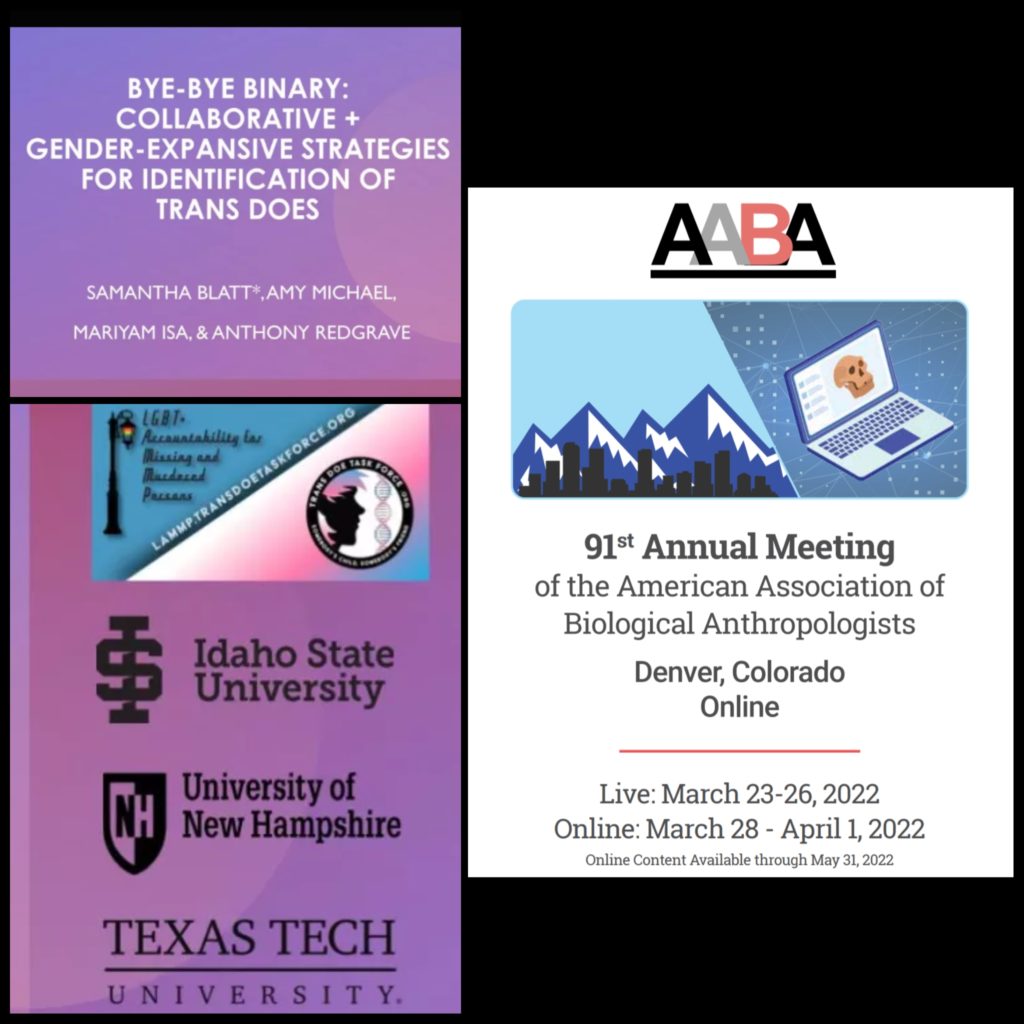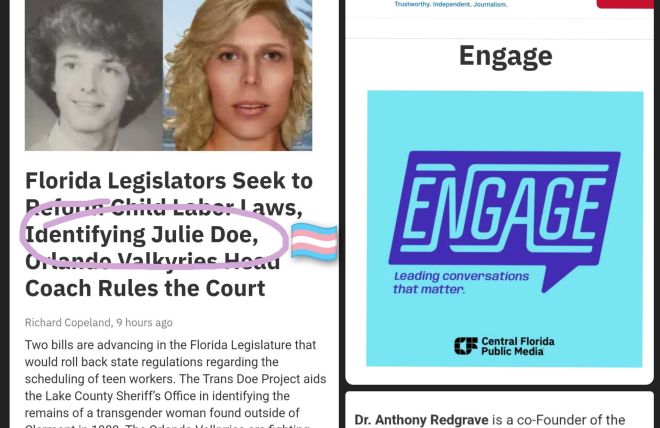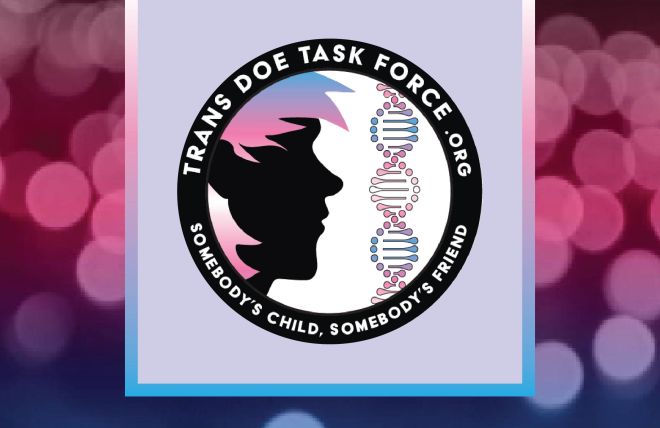
Board and staff members of the Trans Doe Task Force are participating in a symposium at the American Association of Biological Anthropologists (AABA)’s annual meeting on Saturday, March 26th. This is our first year being present at AABA’s annual meeting. The presentation is part of a larger symposium on the topic of sex and gender estimations in the human skeleton. Below is the abstract for our presentation, and further description and schedule of the symposium follows.
(When we are able, we will provide a recording of the presentation and include it in this post.)
Text of abstracts were published in the American Journal of Biological Anthropology (academic login required). Our abstract:
Title: Bye-bye binary: collaborative, gender-expansive strategies for identification of Trans Does
Multiple Authors: SAMANTHA H. BLATT1, AMY R. MICHAEL2, MARIYAM I. ISA3, and ANTHONY REDGRAVE4.
Affiliations: 1Department of Anthropology, Idaho State University, 2Department of Anthropology, University of New Hampshire, 3Department of Anthropology, Texas Tech University, 4Trans Doe Task Force, Redgrave Research.
Abstract Text:
Construction of the biological profile is fundamental to uncovering a decedent’s identity. However, overreliance on sex estimation discounts the importance of gender as a fundamental component of living identity. Skeletal morphology alone cannot inform about gender, but biological sex estimates in combination with other contextual information can be used to construct biocultural profiles that consider identity more holistically. While bioarchaeologists have engaged with gender theory for decades, few forensic anthropologists view sex as nonbinary and fewer have experience with transgender and gender-expansive (TGE) and skeletal indicators of gender-affirming procedures. This is concerning, as TGE individuals experience fatal violence at highly disproportionate rates. Incorporation of queer theory and holistic practices can guide efforts to eradicate biological reductionism and reduce harm in cases involving TGE individuals.
Here, we introduce the multi-disciplinary work, practices, and data mining strategies of the Trans Doe Task Force (TDTF), which advocates a harm reduction model to cultivate culturally-informed and gender-expansive approaches to identifying LGBTQ2S+/TGE victims. Successful TDTF case examples will be used to demonstrate the utility of implementing these strategies as part of collaborative efforts uniting the experiential knowledge of advocates with the osteological and sociocultural knowledge of anthropologists. These strategies were applied contrasted with current medicolegal practices that may serve to impede identifications by failing to consider gender identity and the unique needs of TGE cases. Collaborative initiatives between anthropologists and other forensic professionals along with LGBTQ2S+ community advocates yielded better results when dealing with the challenges of identifying TGE victims.
Further description of the symposium from the AABA 2022 program:
Symposium: Advances and Challenges in the Identification of Sex and Gender in Human Osteological Contexts
Invited Podium Symposium
Chair: Ashley C. Smith
Co-organizers: Jenna Schall
Plaza Ballroom A/B
One of the first steps in the creation of a biological or biocultural profile of skeletal remains is the identification of the sex of the remains. Difficulties, however, have always existed with regards to this part of the profile, particularly with regards to the identification of juvenile and fragmentary remains. Recently, more complications have arisen with the identification of sex in the skeleton, particularly given the rise in recognition of trans, non-binary, and gender non-conforming individuals in society. Given this recognition, it is essential that biological anthropologists adapt their identification methods to accurately incorporate all lived experiences- past, present, and future. This symposium is about the advances in the identification of sex and gender in human osteological surveys, incorporating perspectives from forensic anthropology, bioarchaeology, queer theory, and human biology, as well as lived experience. Papers included in this session present novel methods and modalities in sex assessment, illuminate gaps in the current research, and provide theoretical frameworks, as well as practical solutions, to address these challenges. This session brings together biological anthropologists whose work transcends traditional approaches to science (i.e., trans-exclusionary, heteronormative), with the goal of challenging these narratives to produce innovative and diverse research. Furthermore, this session aims to identify how we can work toward making biological anthropology a more inclusive space for the diversity of human experience. It is divided into two main categories: those focusing on advances in identification of sex, particularly with regards to juvenile and fragmentary remains, and papers focusing on challenging and over-coming the sexual binary and the identification of trans inclusive individuals. This symposium aims to be a mix of both theory and practice to achieve a better understanding on the advances and challenges facing the identification of sex and gender in biological anthropology.
Symposium Schedule
8:30 A New Application of 3D Modelling to Comparative Sex Estimation. E. CHURCH, C. RANDO.
8:45 ‘What big teeth you have!’: Cervicometric Approaches to Sex Estimation of Juveniles. M.K. GRIFFITH.
9:00 Deconstructing biological sex by fuzzifying osteological sex: Implications for theoretically-informed practice. K.M. LANE, D.M. ADAMS.
9:15 Binary Gender and Sexuality Assumptions in Biological Anthropology. M. WILSON.
9:30 Considerations of Sex and Gender in Forensic Anthropology and Archaeology. A.F. KUYKENDALL.
9:45 Break.
10:00 Are we all equal in death? Current barriers to equity and inclusivity in deathcare practices. R.M. MELORO.
10:15 Beauty is not only skin deep: using biocultural methods to support transgender identification in forensic anthropology. J.L. SCHALL, T.L. ROGERS, J.C. DESCHAMPS-BRALY.
10:30 Bye-bye binary: collaborative, gender-expansive strategies for identification of Trans Does. S.H. BLATT, A.R. MICHAEL, M.I. ISA, A. REDGRAVE.
10:45 Public Engagement with a Localized Unidentified and Missing Persons Repository: Community Collaboration as a Contributing Component to the Identification of Trans, Non-binary, and Intersex Individuals. S.I. RECK, T.V. WILSON, E.F. MICHON, G.A. LISTI.
11:00 Discussion.







